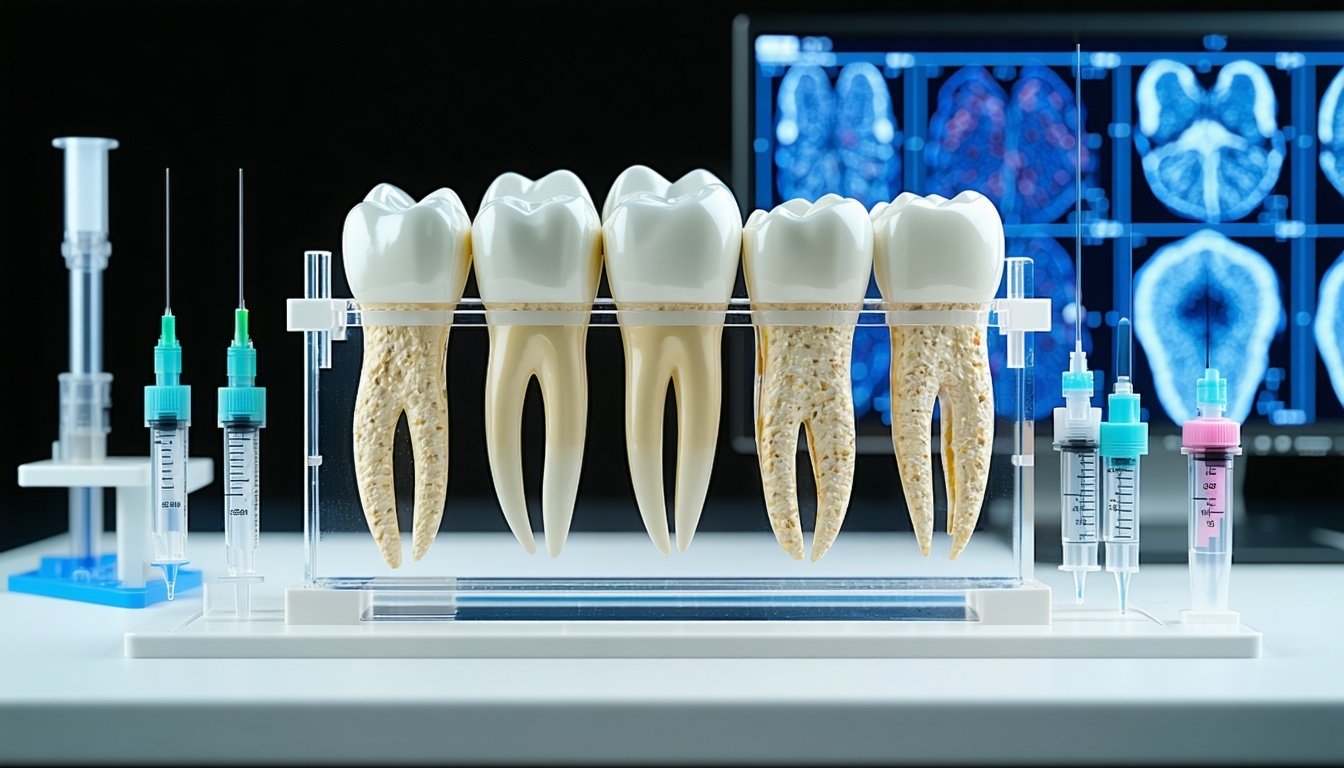A comparison of irrigation methods reveals how activation technique impacts biofilm removal efficiency.
Authors: R. Ordinola-Zapata, C.M. Bramante, R.M. Aprecio, R. Handysides, D.E. Jaramillo
Journal: International Endodontic Journal (2013)
Objective
To compare the effectiveness of four different irrigation techniques for removing biofilm from a bovine root canal model using 6% sodium hypochlorite (NaOCl).
Materials and Methods
Key Results
-
Laser-activated irrigation (PIPS): Achieved the most effective biofilm removal.
-
Passive ultrasonic irrigation (PUI): Significantly more effective than Endoactivator and needle irrigation.
-
Endoactivator vs. Needle irrigation: No significant difference.
-
Controls: Showed the least biofilm removal.
Conclusions
Laser activation of 6% sodium hypochlorite (PIPS) significantly enhances biofilm removal from dentine, outperforming all other tested methods. Passive ultrasonic irrigation is the next most effective technique, while sonic and conventional needle irrigation are less effective and not significantly different from each other.
ACCESS THE FULL ARTICLE HERE

